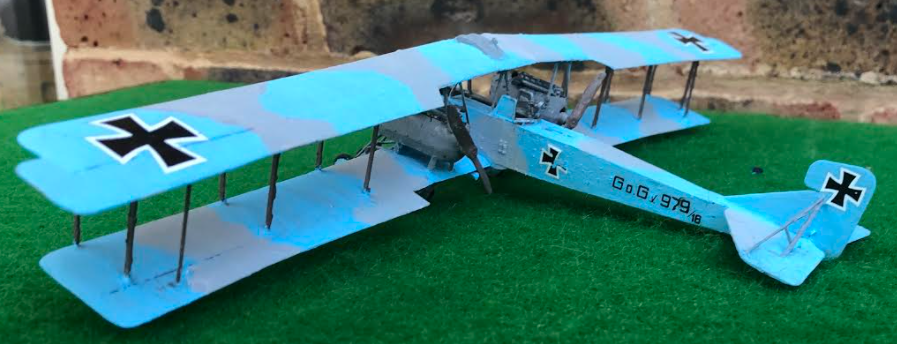GOTHA G.V.
The Gotha G.V was a heavy bomber used by the Luftstreitkräfte (Imperial German Air Service) during World War I. Designed for long-range service, the Gotha G.V was used principally as a night bomber.
Operational use of the Gotha G.IV demonstrated that the incorporation of the fuel tanks into the engine nacelles was a mistake. In a crash landing the tanks could rupture and spill fuel onto the hot engines. This posed a serious problem because landing accidents caused 75% of operational losses. In response Gothaer produced the G.V, which housed its fuel tanks inside the fuselage. The smaller engine nacelles were mounted on struts above the lower wing.
The Gotha G.V pilot seat was offset to port, with the fuel tanks immediately behind. This blocked the connecting walkway that previously on earlier machines allowed crew members to move between the three gun stations. All bombs were carried externally in this model.
The base variant of G.V offered no performance improvement over the G.IV. The G.V was up to 450 kg (990 lb) heavier than the G.IV due to additional equipment and the use of insufficiently seasoned timber. The Mercedes D.IVa engines could not produce the rated 190 kW (260 hp) due to inferior quality of fuel.
Biggin Hill Connection – 1ST BIGGIN HILL “KILL”
– GOTHA V5 (979/16) Shot down 19th/20th May 1918
19-20th May: 38 Gothas + 3 Zeppelin Staakan bombers raid London.
At 00.30hrs, 20th May, Turner (pilot) and Barwise (observer) picked up Gotha GV 979/16 over south Ash. Turner positioned his aircraft below and behind the Gotha. When the enemy filled his gunsight he signalled Barwise to fire.
The first burst hit the port engine. The Gotha went into a flat turn with Barwise giving 2 more bursts into the fuselage and starboard wings.


